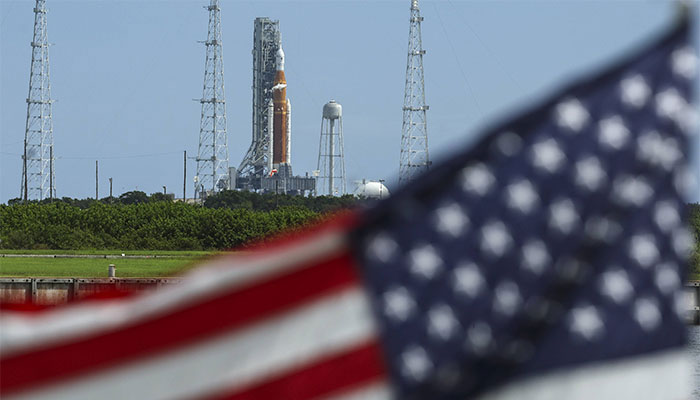[ad_1]
NASA said Friday it plans to attempt its long-awaited uncrewed mission to the moon as scheduled next Wednesday, after inspections revealed only minor damage from Hurricane Nicole’s passage through Florida.
Jim Frye, senior US official outer space Agency, told reporters, “Nothing prevents” launch on that date, she said so NASA The teams made it to the launch pad on Thursday.
Launching the Heavy Missile, the most powerful missile the contractors have ever built NASAis now scheduled to take place at 01:04 AM local time (0604 GMT) on Wednesday, with a potential launch window of two hours.
The uncrewed mission, dubbed Artemis 1, will bring the United States a step closer to returning astronauts to the moon five decades after humans last walked on the lunar surface.
The rocket will propel the empty Orion crew capsule to the Moon, without landing on its surface. If the launch goes as planned, the mission will last 25 1/2 days before the capsule returns on Dec. 11 with a splash down in the Pacific Ocean.
However, the US space agency does have “some work to do” before launch, Frey said, such as commissioning the vehicle and running some technical tests.
One component on the base of the missile, which may have been damaged, may need to be replaced.
The highly anticipated launch has already been delayed three times in as many months.
Free, who is NASA’s associate official for Exploration Systems Development, said two backup launch dates have been set for Nov. 19 and Nov. 25, if needed.
Winds from Hurricane Nicole, a Category 1 storm, battered the rocket while it was standing on the launch pad at Kennedy Space Center. However, the wind speeds did not exceed the limits that the vehicle could handle, Frey said.
However, he acknowledged that if NASA had known a hurricane was approaching, the SLS rocket would have been left in the Vehicle Assembly Building.
The rocket was returned to the building in September to protect it from Hurricane Ian, but was returned to the launch pad a few days before Nicole’s arrival.
Artemis 1 will see the launch of the flagship Artemis programme, which aims to take the first woman and first person of color to the Moon by 2025 at the earliest.
NASA wants to establish a permanent human presence on the moon, including building a space station in lunar orbit. This is seen as a step that could lead to the first trip to Mars.
[ad_2]
Source link

